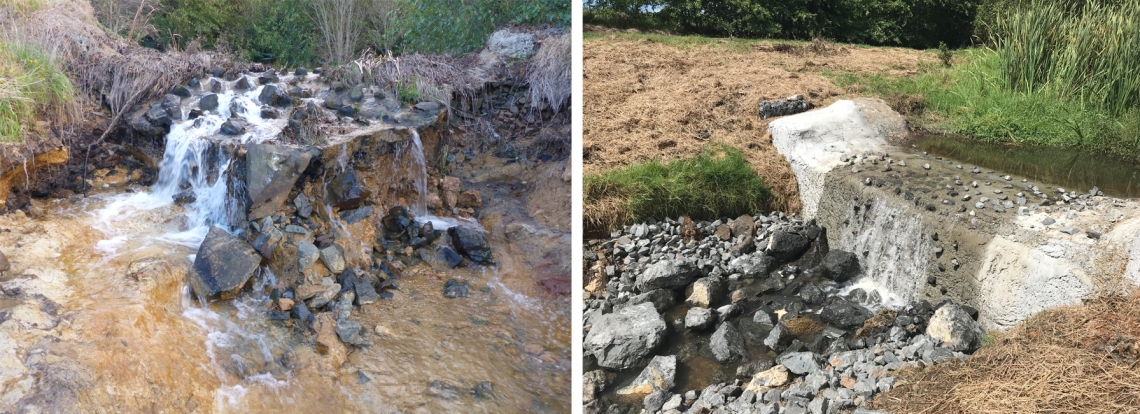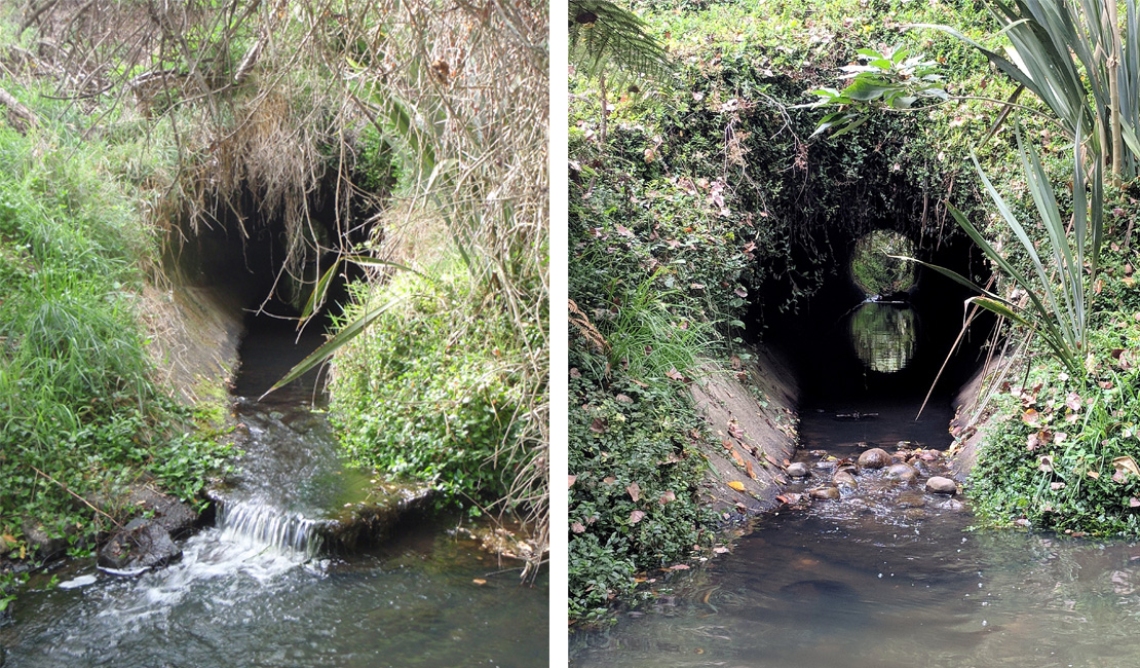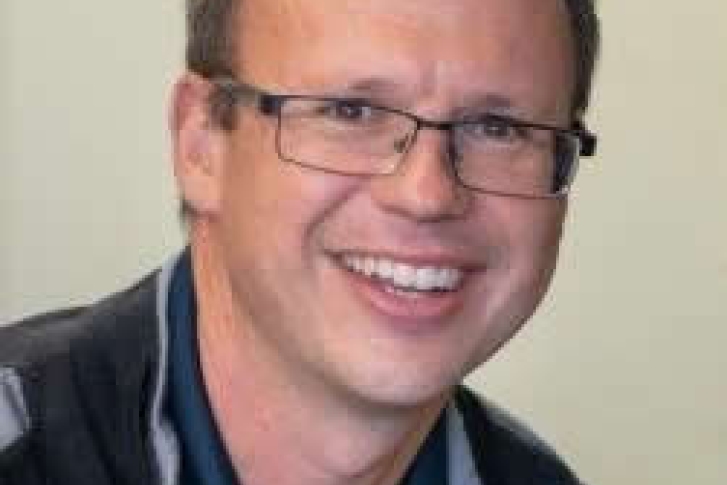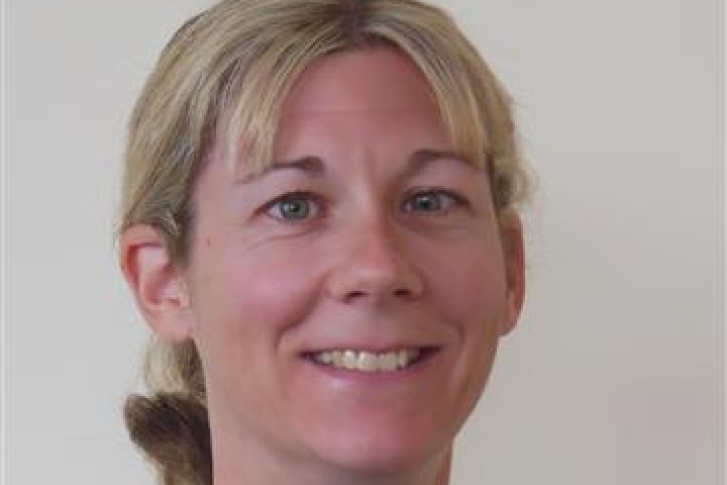About 76 per cent of indigenous freshwater fish species, that’s 39 out of 54, are threatened with extinction or at risk of becoming threatened.
Culverts, dams, weirs, fords and tide gates contribute to the problem because they delay or prevent fish from accessing critical habitats to complete their life cycle.
But now, the National Policy Statement for Freshwater Management requires regional councils to prepare a Fish Passage Action Plan, to ensure the owners of in-stream structures provide a pathway to enable fish to move between marine and freshwater habitats.
NIWA has been contracted by the Ministry for the Environment to run a pilot project initially with West Coast, Taranaki, Hawke’s Bay and Northland regional councils, to help staff develop the action plans.
Project leads Cindy Baker (NIWA principal scientist - freshwater fish ecology) and Paul Franklin (NIWA Freshwater Ecologist) have developed training materials for council staff and iwi partners addressing different aspects of the fish passage management process.
This includes new “Fish Passage Workshops”, delivered in association with fish passage specialists from Australasian Fish Passage Services and Charles Sturt University in Australia.
Baker said the pilot is the first of its kind in New Zealand and will enable regional councils to provide the correct advice on fish passage to landowners.
Staff from the four regional councils and kaitiaki from Te Rūnanga o Ngāti Waewae and Te Rūnanga o Makaawhio (West Coast), Otaraua hapū (Taranaki) and Ngā Kaitiaki o Ngā Wai Māori (Northland) recently completed intensive four-day workshops.
Participants could elect to attend a workshop in Wellington, or another held in the Waikato.
The workshops involved a mixture of theory, hands-on fish passage design and site visits to existing fish barriers as case studies.
Baker said regional council staff and iwi practitioners will need to know how to identify in-stream structures that create barriers to fish passage.
They will need to develop criteria to help prioritise the barriers for remediation, implement effective, evidence-based devices to enable fish passage, and thereafter monitor those passages to make sure they work.
It was important to look at the situation from a “fish perspective”, she said.
“That’s to understand what fish need to pass in-stream structures. It’s about having a sense of where fish are going, why they are going there and what they are looking for.
“That will allow fish passages to be designed to match fish behaviour, to suit different situations or locations.”
Baker said if sufficient numbers of fish cannot migrate upstream, an important part of the freshwater ecosystem is very likely to disappear from many streams across New Zealand.
“For Māori in particular, native fish are important mahinga kai sources, part of their livelihood and an integral part of their culture.
“Kiwis get a lot of joy from fishing. It is part of our culture, and it is something we often do to share time together.”
Baker and Franklin ran the workshops with Australasian Fish Passage Services Director Tim Marsden and Ivor Stuart, a fish ecologist who is an associate professor at Charles Sturt University.
“In Australia, if you are building a road or weir for example, it has become routine business that you must incorporate fish passage, it is part of the process now,” Marsden said.
“New Zealand has good legislation around fish passage but is still in that early phase where people are unsure of implementation, that’s probably a phase Australia was in about 10-15 years ago.”
Marsden said some of Australia’s early fish passages were based on designs used in America.
“But it didn’t work for our fish, so we adapted the designs for Australian species. The fish we have in Australia are similar or the same in some cases to New Zealand, so our knowledge is transferable.”
He hoped the workshop would give participants the confidence to start engaging with landowners about making in-stream structures “fish friendly”.
“It’s good to have the knowledge but convincing people to implement fish passage plans can be a challenge.
“So, it’s about having that conversation, explaining what good fish passage looks like, and then calling on the experts like Paul and Cindy to help with design.”
Paul Franklin, who leads NIWA’s Freshwater Species programme, agreed that implementation of fish passage design was challenging.
“It’s been a talking point during the workshop, about how to encourage people to uptake the knowledge we have and then put it into action.
“But we hope through workshops like this one, we can raise awareness of how important good fish passage design is to the survival of our freshwater species.”






